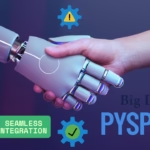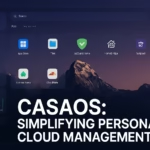In 2025, self-hosting Large Language Models (LLMs) has become increasingly accessible for individuals and organizations seeking greater privacy control and long-term cost efficiency. This comprehensive guide will walk you through everything you need to know about self-hosting LLMs in the current technological landscape.
Key Takeaways:
- Self-hosting LLMs offers complete privacy control and long-term cost savings
- Hardware requirements range from entry-level to high-end setups
- Popular open-source models and frameworks make deployment accessible
- Proper optimization and troubleshooting are crucial for success
Understanding the Self-Hosting Landscape in 2025
Self-hosting LLMs means running these powerful AI models on your own hardware rather than relying on cloud-based API services. The key benefits include:
- Complete privacy: Your data never leaves your infrastructure
- No ongoing API costs: Pay once for hardware, use indefinitely
- Customization freedom: Fine-tune models for your specific needs
- No internet dependency: Models work offline
- No rate limits or quotas: Use as much as your hardware allows
Hardware Requirements

Hardware needs vary based on model size and performance expectations:
Entry-Level (7-13B parameter models)
- CPU: 12+ core modern processor
- RAM: 16-32GB
- GPU: Consumer GPU with 8+ GB VRAM (RTX 4070 or better)
- Storage: 50-100GB SSD
- Estimated cost: ₹80,000-1,50,000 ($1,000-$2,000 USD)
You can also explore making hackintosh as dual boot system, check the compatibility guide!
Mid-Range (13-30B parameter models)
- CPU: 16+ core processor
- RAM: 64GB+
- GPU: High-end consumer GPU (RTX 4080/4090) or entry-level data center GPU
- Storage: 200GB+ NVMe SSD
- Estimated cost: ₹2,00,000-3,50,000 ($2,500-$4,500 USD)
High-End (70B+ parameter models)
- CPU: 32+ core workstation processor
- RAM: 128GB+
- GPU: Multiple high-end GPUs or specialized AI accelerators
- Storage: 500GB+ NVMe SSD
- Estimated cost: ₹5,00,000+ ($6,000+ USD)
Popular Self-Hostable Models in 2025
- Llama 3 Open Series: Meta’s open-source models from 8B to 70B parameters
- Mistral AI Models: Efficient models with strong performance-to-size ratio
- Phi-3 Series: Microsoft’s compact yet powerful models
- Gemma Family: Google’s efficient open models
- Qwen2 Models: Alibaba’s multilingual models with strong coding capabilities
Software Infrastructure
Inference Frameworks
- llama.cpp (GitHub): Lightweight C++ implementation for efficient CPU/GPU inference
- vLLM (GitHub): High-throughput server with PagedAttention technology
- text-generation-webui (GitHub): User-friendly UI for model management
- Ollama (Website): Simplified container-based model management
- LocalAI (GitHub): Self-hosted alternative to OpenAI’s API
Deployment Options
- Direct installation: Install frameworks directly on Linux/Windows/macOS
- Docker containers: Simplified deployment with pre-configured environments
- Kubernetes: For enterprise-scale deployments
- Home server appliances: Specialized hardware with pre-installed LLM software
Step-by-Step Setup Guide
- Prepare your hardware
- Ensure proper cooling and power supply
- Install compatible OS (Linux recommended for best performance)
- Choose your inference framework
- For beginners: text-generation-webui or Ollama
- For performance optimization: vLLM or llama.cpp
- Install dependencies
# Example for Ubuntu/Debiansudo apt updatesudo apt install python3-pip python3-venv git cmake build-essential - Download and set up your chosen framework
# Example for text-generation-webuigit clone https://github.com/oobabooga/text-generation-webuicd text-generation-webuipython3 -m venv venvsource venv/bin/activatepip install -r requirements.txt - Download your preferred model
- Most frameworks include model downloaders
- Alternatively, download directly from Hugging Face
- Configure for optimal performance
- Set appropriate context length
- Enable quantization if needed
- Configure batch sizes based on your hardware
- Set up a secure access method
- Local network only
- VPN for remote access
- Authentication for multi-user scenarios
Optimizing Performance
Quantization Techniques
- GGUF/GGML (Documentation): Common formats for compressed models
- Q4_K_M: Good balance between quality and memory usage
- AWQ/GPTQ (GitHub): Advanced quantization with minimal quality loss
Memory Optimization
- Low-rank adaptation (LoRA) (Hugging Face Guide): For efficient fine-tuning
- Flash Attention (Paper): Reduces memory footprint during inference
- vRAM Offloading: Keeps parts of the model in system RAM
Privacy Considerations
- Network isolation: Consider air-gapping sensitive deployments
- Data handling: Implement proper data retention/deletion policies
- Model provenance: Verify model sources and training data
- Regular updates: Keep inference software updated for security patches
Cost Analysis: Self-Hosting vs. API Services
Example Scenario: Medium-sized business (100,000 queries/month)
Self-Hosting Costs:
- Initial hardware: ₹2,50,000 ($3,000 USD) (amortized over 3 years)
- Electricity: ₹3,000 ($40 USD)/month
- Maintenance: ₹5,000 ($60 USD)/month
- Total monthly cost: ~₹15,000 (~$180 USD)
API Service Costs:
- OpenAI GPT-4o: ~₹3.50 (~$0.04 USD) per 1K tokens × ~2K tokens per query × 100K queries
- Total monthly cost: ~₹70,000 (~$800 USD)
Break-even point: ~4-5 months
Advanced Use Cases
- Model fine-tuning: Customize models for domain-specific knowledge
- Multi-model orchestration: Run different models for different tasks
- Retrieval-Augmented Generation (RAG) (LangChain Documentation): Combine with vector databases
- Hybrid deployments: Balance self-hosted and API-based services
Troubleshooting Common Issues
- Out of memory errors: Reduce batch size or use quantization
- Slow inference: Check for thermal throttling, optimize prompt length
- Model hallucinations: Consider newer models or RAG implementation
- GPU utilization issues: Update drivers, check CUDA compatibility
Useful Resources
- r/LocalLLaMA (Subreddit): Community forum for self-hosting LLMs
- Hugging Face (Website): Model repository and documentation
- LMStudio (Website): Desktop application for running models locally
- Jan.ai (Website): Open-source ChatGPT alternative for desktop
- GPT4All (Website): Easy-to-use interface for local LLMs
Future-Proofing Your Setup
- Modular hardware design: Allow for component upgrades
- Containerized deployment: Simplify model switching and updates
- Benchmark regularly: Monitor performance vs. latest cloud offerings
- Community engagement: Follow developments in open-source LLM space
Is self-hosting LLMs difficult for non-technical users?
While some technical knowledge is helpful, user-friendly tools like LMStudio and Jan.ai have made it more accessible.
Can self-hosted LLMs match the quality of cloud API services?
With proper setup and optimization, self-hosted models can achieve comparable results for many tasks.
How often do I need to upgrade my hardware?
It depends on your needs, but a well-chosen setup can remain effective for 2-3 years.
Are there legal concerns with self-hosting open-source models?
Most open-source models have permissive licenses, but always check the specific terms for commercial use.
Can I use self-hosted LLMs for sensitive data in regulated industries?
Yes, self-hosting provides better control for compliance, but consult with legal experts for your specific situation.
Conclusion
Self-hosting LLMs in 2025 provides compelling advantages for privacy-conscious users and organizations looking for cost-effective AI solutions. With the continuing democratization of AI technology, the barriers to entry have decreased substantially, making this approach viable for a wider range of users than ever before.
The initial investment in hardware and setup time can pay off quickly for moderate to heavy usage patterns, while providing complete control over your data and AI infrastructure. As model efficiency continues to improve, the accessibility of self-hosted LLMs will only increase in the coming years.













